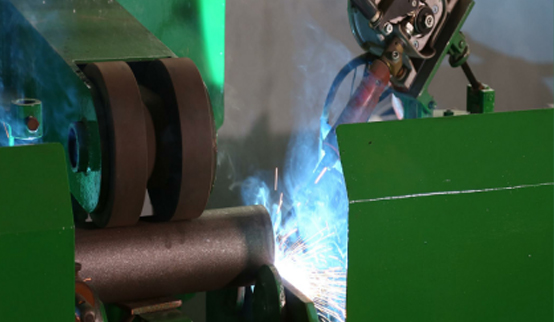 Afrikaans
Afrikaans  Albanian
Albanian  Amharic
Amharic  Arabic
Arabic  Armenian
Armenian  Azerbaijani
Azerbaijani  Basque
Basque  Belarusian
Belarusian  Bengali
Bengali  Bosnian
Bosnian  Bulgarian
Bulgarian  Catalan
Catalan  Cebuano
Cebuano  Corsican
Corsican  Croatian
Croatian  Czech
Czech  Danish
Danish  Dutch
Dutch  English
English  Esperanto
Esperanto  Estonian
Estonian  Finnish
Finnish  French
French  Frisian
Frisian  Galician
Galician  Georgian
Georgian  German
German  Greek
Greek  Gujarati
Gujarati  Haitian Creole
Haitian Creole  hausa
hausa  hawaiian
hawaiian  Hebrew
Hebrew  Hindi
Hindi  Miao
Miao  Hungarian
Hungarian  Icelandic
Icelandic  igbo
igbo  Indonesian
Indonesian  irish
irish  Italian
Italian  Japanese
Japanese  Javanese
Javanese  Kannada
Kannada  kazakh
kazakh  Khmer
Khmer  Rwandese
Rwandese  Korean
Korean  Kurdish
Kurdish  Kyrgyz
Kyrgyz  Lao
Lao  Latin
Latin  Latvian
Latvian  Lithuanian
Lithuanian  Luxembourgish
Luxembourgish  Macedonian
Macedonian  Malgashi
Malgashi  Malay
Malay  Malayalam
Malayalam  Maltese
Maltese  Maori
Maori  Marathi
Marathi  Mongolian
Mongolian  Myanmar
Myanmar  Nepali
Nepali  Norwegian
Norwegian  Norwegian
Norwegian  Occitan
Occitan  Pashto
Pashto  Persian
Persian  Polish
Polish  Portuguese
Portuguese  Punjabi
Punjabi  Romanian
Romanian  Russian
Russian  Samoan
Samoan  Scottish Gaelic
Scottish Gaelic  Serbian
Serbian  Sesotho
Sesotho  Shona
Shona  Sindhi
Sindhi  Sinhala
Sinhala  Slovak
Slovak  Slovenian
Slovenian  Somali
Somali  Spanish
Spanish  Sundanese
Sundanese  Swahili
Swahili  Swedish
Swedish  Tagalog
Tagalog  Tajik
Tajik  Tamil
Tamil  Tatar
Tatar  Telugu
Telugu  Thai
Thai  Turkish
Turkish  Turkmen
Turkmen  Ukrainian
Ukrainian  Urdu
Urdu  Uighur
Uighur  Uzbek
Uzbek  Vietnamese
Vietnamese  Welsh
Welsh  Bantu
Bantu  Yiddish
Yiddish  Yoruba
Yoruba  Zulu
Zulu belt and pulley drive
Belt and Pulley Drive An Overview
The belt and pulley drive system is a fundamental mechanical arrangement used in various machines and industrial applications. This system comprises a belt, typically made of flexible material, and pulleys, which are wheels with grooves designed to hold the belt in place. The simplicity, efficiency, and versatility of belt and pulley drives make them an integral part of modern machinery.
Principle of Operation
At its core, the belt and pulley system operates on the principle of transferring rotational motion from one pulley to another through the belt. When one pulley, the driving pulley, rotates, it moves the belt, which in turn causes the other pulley, the driven pulley, to rotate. This system can easily be adjusted for speed, torque, and direction, making it a highly adaptable solution in various applications.
Types of Belts and Pulleys
There are several types of belts utilized in belt and pulley systems, including flat belts, V-belts, and timing belts. Each type serves specific applications based on the required friction, tension, and speed. Flat belts are often used in light-duty applications, while V-belts can handle higher loads due to their wedged shape that increases friction with the pulley. Timing belts, featuring teeth that grip the pulleys, ensure precise movement in applications requiring synchronicity, such as in automotive engines.
Pulleys themselves can vary in size and shape. Simple grooved pulleys are common, but sheave pulleys, which have multiple grooves, are also used to drive multiple belts simultaneously. The diameter of the pulleys significantly impacts the system's performance; larger pulleys can increase torque and reduce speed, while smaller ones do the opposite.
belt and pulley drive

Advantages of Belt and Pulley Drives
Belt and pulley drives provide numerous advantages. One of the most significant benefits is their ability to transmit motion over a considerable distance, allowing for flexible machine configurations. Additionally, they can isolate vibrations and reduce noise, contributing to a quieter operating environment. Because they do not rely on direct contact, they tend to require less maintenance compared to gears and other transmission systems.
Moreover, belt drives are often more forgiving in terms of misalignment, which can be a critical factor in many industrial applications. The elastic nature of belts helps prevent damage to both the pulleys and the drive system if misalignments occur, ensuring longevity.
Applications
Belt and pulley drives are used extensively across various industries. In manufacturing, they are found in conveyor systems, textile machinery, and power transmission applications. In the automotive sector, belt-driven accessories like alternators and air conditioning compressors leverage this technology for efficient operation. Additionally, these systems are prevalent in home appliances such as washing machines and exercise equipment, demonstrating their practicality in both industrial and everyday contexts.
Conclusion
In conclusion, the belt and pulley drive system is a crucial component of countless mechanical applications. Its adaptability, efficiency, and cost-effectiveness continue to make it a preferred choice across various industries. As technology advances, innovations in belt materials and designs will further enhance the capabilities of this essential system, ensuring its relevance for years to come. Understanding the principles behind belt and pulley drives can facilitate better design and application, ultimately leading to improved performance and reliability in mechanical systems.
-
Revolutionizing Conveyor Reliability with Advanced Rubber Lagging PulleysNewsJul.22,2025
-
Powering Precision and Durability with Expert Manufacturers of Conveyor ComponentsNewsJul.22,2025
-
Optimizing Conveyor Systems with Advanced Conveyor AccessoriesNewsJul.22,2025
-
Maximize Conveyor Efficiency with Quality Conveyor Idler PulleysNewsJul.22,2025
-
Future-Proof Your Conveyor System with High-Performance Polyurethane RollerNewsJul.22,2025
-
Driving Efficiency Forward with Quality Idlers and RollersNewsJul.22,2025





























